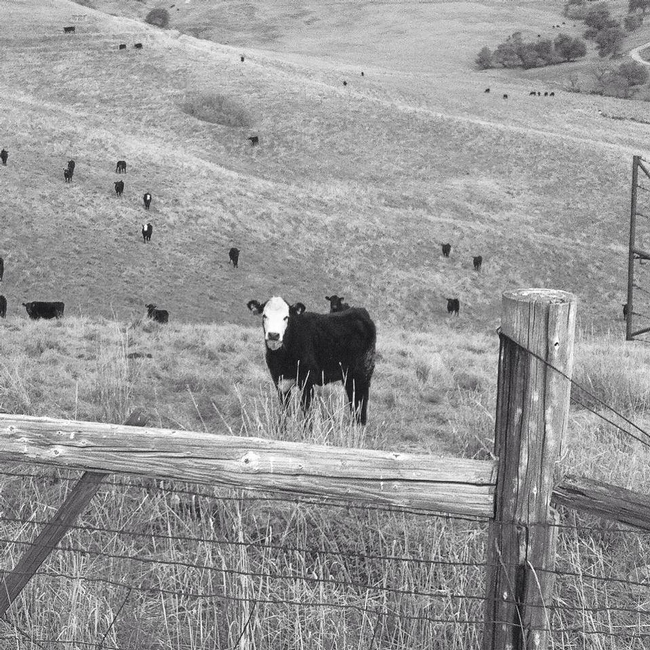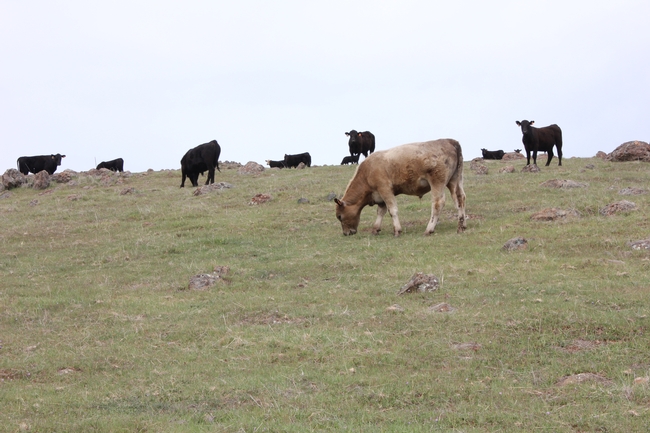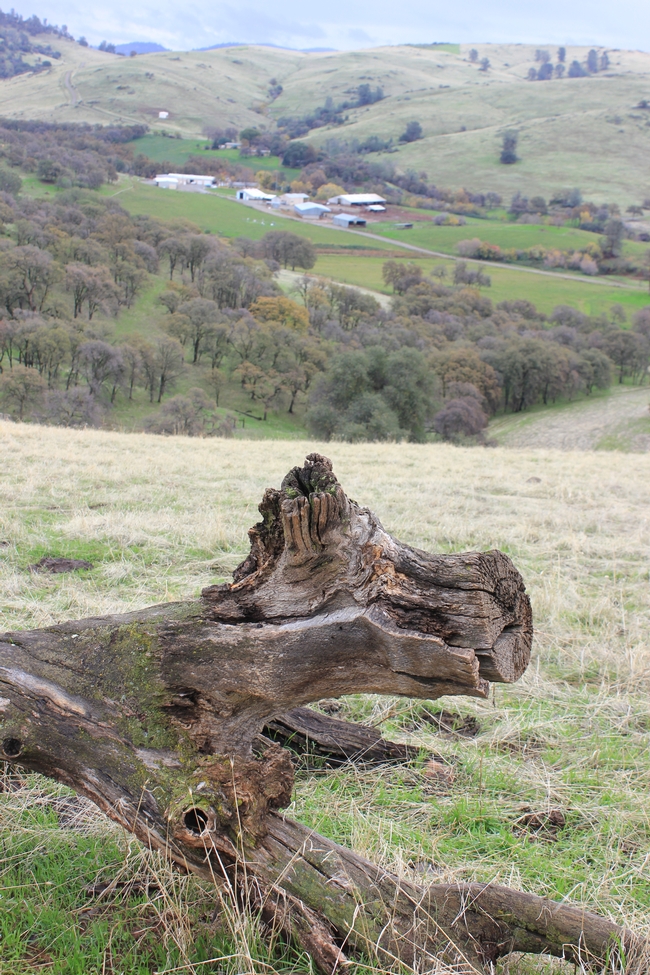
This year, we have four distinct groups of cattle at SFREC. Each group is part of one or more research projects:
- We have cow-calf pairs that belong to the UC Davis Animal Science Department. These are fall-calving cows. In normal years, the calves are weaned in late May, and the cows are grazed on dry forage during the summer and fall. Currently, this herd is split into 3 groups – older cows with calves, second-calf heifers with calves, and open cows with calves.
- We have bred heifers also belonging to the UC Davis Animal Science Department. These heifers are typically grazed on irrigated pastures during the summer and through fall calving.
- We have outside heifers that are part of a foothill abortion vaccine trial. These heifers will be preg-checked in mid-April. Normally, the open heifers would be kept at SFREC until late May.
- We have steers that are part of a long term adaptive management and targeted grazing research project. Like the heifers, these steers would be kept at SFREC until late May in a normal year.
But this year is anything but normal! After a very promising fall (with normal germination of our annual grasses and near-normal forage growth through the end of December), we are now coping with a fourth year of drought. Since January 1, we've measured just 2.43 inches of precipitation (average for January-March is 11.69 inches). With the lack of rainfall, forage growth has slowed (total production through April 1 was 1400 pounds per acre, which is about 100 pounds less than normal for this time of year). Total production doesn't tell the whole story, however; the pastures that we've grazed since the first of the year haven't recovered as expected (which means we haven't returned to these pastures as expected). My colleagues who have worked at SFREC for a number of years tell me that the vegetation is at least 30 days ahead of schedule – in other words, our annual rangeland looks more like mid-May than early April. All of this means that this week's rain will help in some pastures, but it's “too little, too late” in others. Our peak standing crop (the total amount of forage grown during this growing season) will likely be far below our long term average of 3000 pounds per acre.

Based on this year's reality, we started fine-tuning our drought plan in early March. One of the key steps in our drought planning is to establish a critical date – a date by which we'll make some stocking decisions if we don't receive rainfall. In early March, we decided that if we hadn't received at least an inch of precipitation by April 1, we'd need to start taking action. Here are the steps we're looking at taking in the next 30 days (by May 1):
- Ship the open foothill abortion heifers 7-10 days following preg-check. This will allow us to take as many as 150 heifers off the pastures at SFREC.
- Ship some of the steers (at least those in pastures where feed is not re-growing) by early May. If we do happen to get some late-spring moisture, this would allow some regrowth for next fall. This week's rain may be enough to get us through to the end of May.
- Ship open cows and calves. There are only 13 pairs that fall into this category, but every little bit helps!
- Wean early. Some of the Animal Science calves already weigh more than 500 pounds. Another large group is between 450 and 500 pounds. Weaning the calves now and shipping them off SFREC, will reduce the nutritional demand on the cows, and will reduce the forage demand (both from cows and from big calves) on our rangeland.

For more information on long-term weather and forage production trends in the Sierra Foothills click here. If you are interested in getting more information managing through low rainfall/forage years SFREC has a number of videos and publications that explore this topic.
To get more information about how producers can benefit from forage production data, click here.